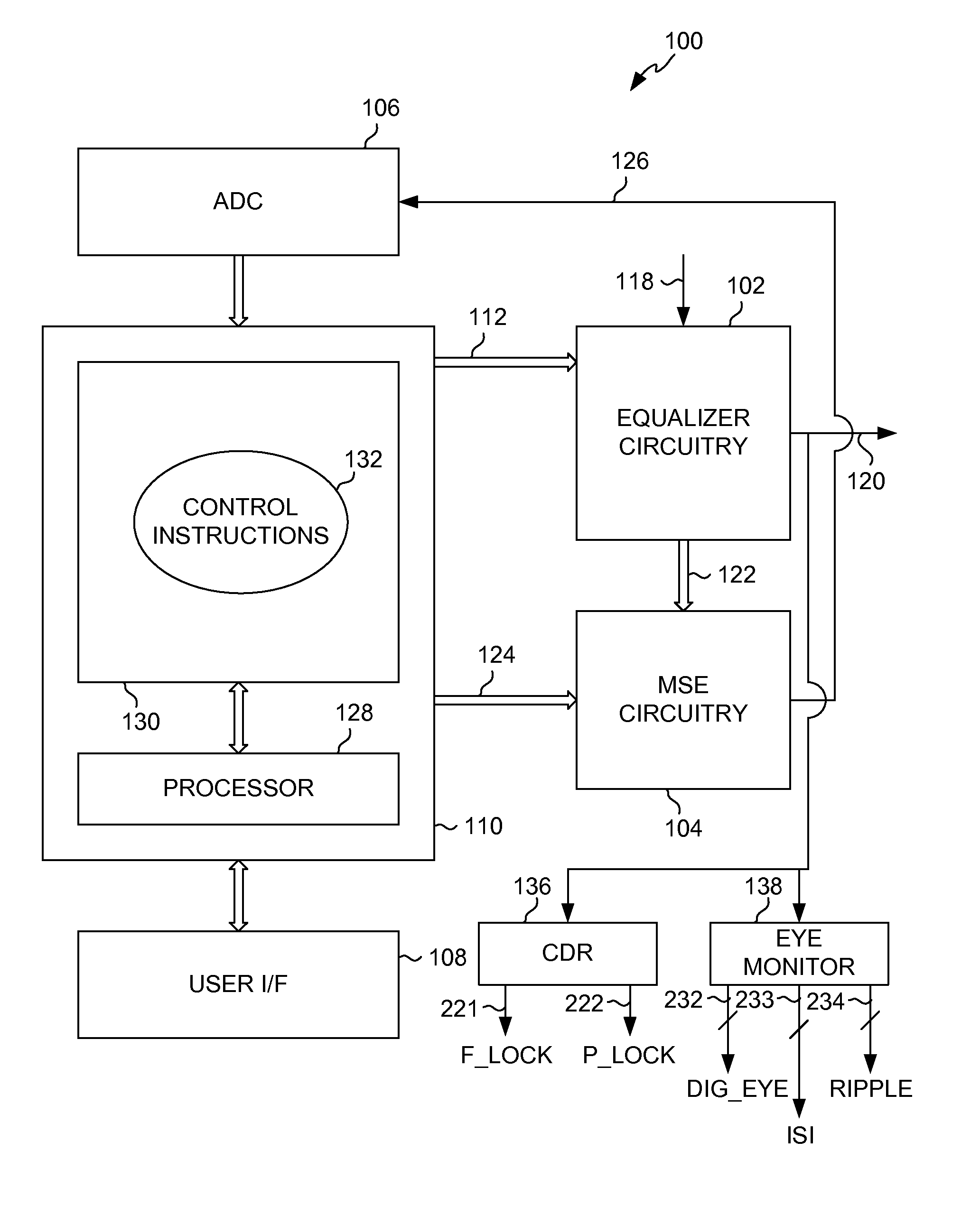Rate-adaptive equalizer that automatically initializes itself based on detected channel conditions, and a method
a rate-adaptive equalizer and channel technology, applied in the field of equalizers, can solve the problems of low accuracy, low rate-adaptive equalizers, and inability to perfectly linear channel frequency response, and achieve the effect of high-quality eyes
- Summary
- Abstract
- Description
- Claims
- Application Information
AI Technical Summary
Benefits of technology
Problems solved by technology
Method used
Image
Examples
Embodiment Construction
[0029]In accordance with embodiments described herein, a rate-adaptive equalizer is provided that automatically initializes its tap coefficients to values that should allow the CRD to achieve frequency lock. During an initialization process, a linear search algorithm is performed that generates different combinations of the tap coefficients and applies them to the taps while evaluating information relating to an eye associated with an input signal received at the input of the equalizer. As is well known in the art, the eye opening provides information about ISI and noise on the communications channel and is used to ascertain the integrity of the received input signal. After all of the different combinations of tap coefficients have been applied to the taps, the set of tap coefficients that resulted in the best eye opening is designated as the initial set of tap coefficients to be applied to the taps as the beginning state of the equalizer. The main, or post-initialization, equalizat...
PUM
 Login to View More
Login to View More Abstract
Description
Claims
Application Information
 Login to View More
Login to View More - R&D
- Intellectual Property
- Life Sciences
- Materials
- Tech Scout
- Unparalleled Data Quality
- Higher Quality Content
- 60% Fewer Hallucinations
Browse by: Latest US Patents, China's latest patents, Technical Efficacy Thesaurus, Application Domain, Technology Topic, Popular Technical Reports.
© 2025 PatSnap. All rights reserved.Legal|Privacy policy|Modern Slavery Act Transparency Statement|Sitemap|About US| Contact US: help@patsnap.com



